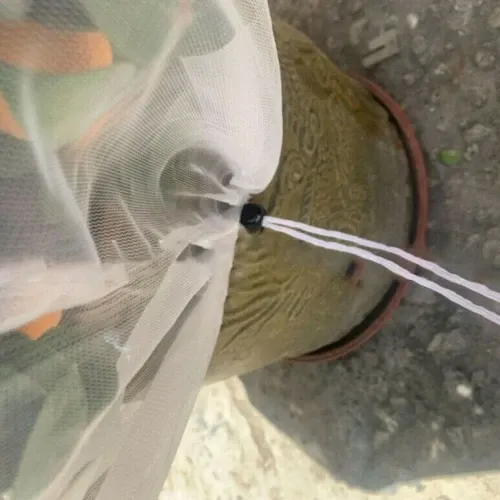-
 Afrikaans
Afrikaans -
 Albanian
Albanian -
 Amharic
Amharic -
 Arabic
Arabic -
 Armenian
Armenian -
 Azerbaijani
Azerbaijani -
 Basque
Basque -
 Belarusian
Belarusian -
 Bengali
Bengali -
 Bosnian
Bosnian -
 Bulgarian
Bulgarian -
 Catalan
Catalan -
 Cebuano
Cebuano -
 China
China -
 Corsican
Corsican -
 Croatian
Croatian -
 Czech
Czech -
 Danish
Danish -
 Dutch
Dutch -
 English
English -
 Esperanto
Esperanto -
 Estonian
Estonian -
 Finnish
Finnish -
 French
French -
 Frisian
Frisian -
 Galician
Galician -
 Georgian
Georgian -
 German
German -
 Greek
Greek -
 Gujarati
Gujarati -
 Haitian Creole
Haitian Creole -
 hausa
hausa -
 hawaiian
hawaiian -
 Hebrew
Hebrew -
 Hindi
Hindi -
 Miao
Miao -
 Hungarian
Hungarian -
 Icelandic
Icelandic -
 igbo
igbo -
 Indonesian
Indonesian -
 irish
irish -
 Italian
Italian -
 Japanese
Japanese -
 Javanese
Javanese -
 Kannada
Kannada -
 kazakh
kazakh -
 Khmer
Khmer -
 Rwandese
Rwandese -
 Korean
Korean -
 Kurdish
Kurdish -
 Kyrgyz
Kyrgyz -
 Lao
Lao -
 Latin
Latin -
 Latvian
Latvian -
 Lithuanian
Lithuanian -
 Luxembourgish
Luxembourgish -
 Macedonian
Macedonian -
 Malgashi
Malgashi -
 Malay
Malay -
 Malayalam
Malayalam -
 Maltese
Maltese -
 Maori
Maori -
 Marathi
Marathi -
 Mongolian
Mongolian -
 Myanmar
Myanmar -
 Nepali
Nepali -
 Norwegian
Norwegian -
 Norwegian
Norwegian -
 Occitan
Occitan -
 Pashto
Pashto -
 Persian
Persian -
 Polish
Polish -
 Portuguese
Portuguese -
 Punjabi
Punjabi -
 Romanian
Romanian -
 Russian
Russian -
 Samoan
Samoan -
 Scottish Gaelic
Scottish Gaelic -
 Serbian
Serbian -
 Sesotho
Sesotho -
 Shona
Shona -
 Sindhi
Sindhi -
 Sinhala
Sinhala -
 Slovak
Slovak -
 Slovenian
Slovenian -
 Somali
Somali -
 Spanish
Spanish -
 Sundanese
Sundanese -
 Swahili
Swahili -
 Swedish
Swedish -
 Tagalog
Tagalog -
 Tajik
Tajik -
 Tamil
Tamil -
 Tatar
Tatar -
 Telugu
Telugu -
 Thai
Thai -
 Turkish
Turkish -
 Turkmen
Turkmen -
 Ukrainian
Ukrainian -
 Urdu
Urdu -
 Uighur
Uighur -
 Uzbek
Uzbek -
 Vietnamese
Vietnamese -
 Welsh
Welsh -
 Bantu
Bantu -
 Yiddish
Yiddish -
 Yoruba
Yoruba -
 Zulu
Zulu
clear bird netting
Clear Bird Netting Protecting Crops While Preserving Nature
As agriculture continues to evolve, farmers face numerous challenges, among which bird damage to crops has become a significant concern. Birds can wreak havoc on fields, orchards, and gardens, often leading to substantial losses for farmers. To address this issue, clear bird netting has emerged as a highly effective solution. This article explores the benefits, applications, and importance of clear bird netting in agricultural practices, while also considering its ecological impact.
Understanding Clear Bird Netting
Clear bird netting is a specialized mesh designed to prevent birds from accessing crops while allowing light, air, and rain to reach the plants. Made from durable materials such as polyethylene, this netting is lightweight yet strong enough to withstand various environmental conditions. One of its standout features is its transparent design, which minimizes the visual disturbance to the landscape and enables farmers to monitor their crops without obstruction.
Benefits of Clear Bird Netting
1. Crop Protection The primary advantage of clear bird netting is its ability to protect crops from bird-related damage. By forming a barrier, it prevents birds from pecking at fruits, seeds, and young plants. This safeguard is crucial, especially during the ripening season when crops are most vulnerable.
2. Minimal Environmental Impact Unlike traditional methods of pest control, such as the use of toxic chemicals or traps, clear bird netting provides a humane approach to bird management. It allows birds to thrive in their natural environments while safeguarding agricultural productivity.
3. Weather Resistance Clear bird netting is designed to endure various weather conditions, from harsh sunlight to heavy rain. Its UV-resistant properties ensure longevity, making it a worthwhile investment for farmers looking for durable solutions.
4. Versatility This type of netting can be adapted to various agricultural settings, including vineyards, orchards, and vegetable gardens. Farmers can customize the size and shape to fit their specific needs, ensuring comprehensive coverage of their crops.
clear bird netting

5. Cost-Effectiveness By preventing crop damage, clear bird netting can significantly reduce losses and increase yields. The initial investment in netting can lead to greater profits long-term, as less crop loss translates to more product availability for market sales.
Applications in Agriculture
Farmers employ clear bird netting in multiple scenarios. In vineyards, it is commonly used to protect grapes from frugivorous birds, which can decimate an entire harvest in just a few days. In fruit orchards, netting shields peaches, cherries, and apples from birds eager to feast on these delectable treats. Additionally, vegetable gardeners use netting to safeguard seedlings and ripening vegetables from hungry birds.
Beyond just protecting crops, clear bird netting also contributes to improving soil health. By discouraging birds from eating seeds, it allows for better germination rates and more robust plant growth, ultimately leading to healthier ecosystems and sustainable farming.
Balancing Agriculture and Nature
The implementation of clear bird netting reflects a growing awareness of the need to balance agricultural practices with ecological considerations. While protecting crops is essential for food production and economic stability, it's equally important to ensure that wildlife is not unduly harmed in the process. By using clear bird netting, farmers can achieve this balance, supporting both agricultural productivity and avian conservation.
Conclusion
In summary, clear bird netting is a vital agricultural tool that provides a protective barrier for crops while allowing for ecosystem preservation. Its numerous benefits, encompassing crop protection, weather resistance, and humane pest management, make it an attractive option for farmers. As the agricultural landscape continues to shift, adopting modern strategies like clear bird netting can enhance productivity and sustainability, ensuring that we can feed growing populations while respecting the natural world.
-
Shipping Plastic Bags for Every NeedNewsJul.24,2025
-
Safety Netting: Your Shield in ConstructionNewsJul.24,2025
-
Plastic Mesh Netting for Everyday UseNewsJul.24,2025
-
Nylon Netting for Every UseNewsJul.24,2025
-
Mesh Breeder Box for Fish TanksNewsJul.24,2025
-
Expanded Steel Mesh Offers Durable VersatilityNewsJul.24,2025











